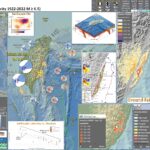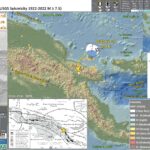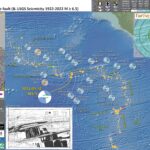I don’t always have the time to write a proper Earthquake Report. However, I prepare interpretive posters for these events. Because of this, I present Earthquake Report Lite. (but it is more than just water, like the adult beverage that…
Earthquake Report: M 7.6 Papua New Guinea
I was travelling to southern California to attend the annual meeting for the Southern California Earthquake Center. This was the first in person meeting since 2019, my first SCEC meeting. I had landed and was waiting for the luggage to…
Earthquake Report: M 6.9 Mid Atlantic Ridge
There have not been that many large earthquakes this year. This is good for one main reason, there is a lower potential for human suffering. Therefore, there are fewer Earthquake Reports for this year. This morning (my time) there was…



